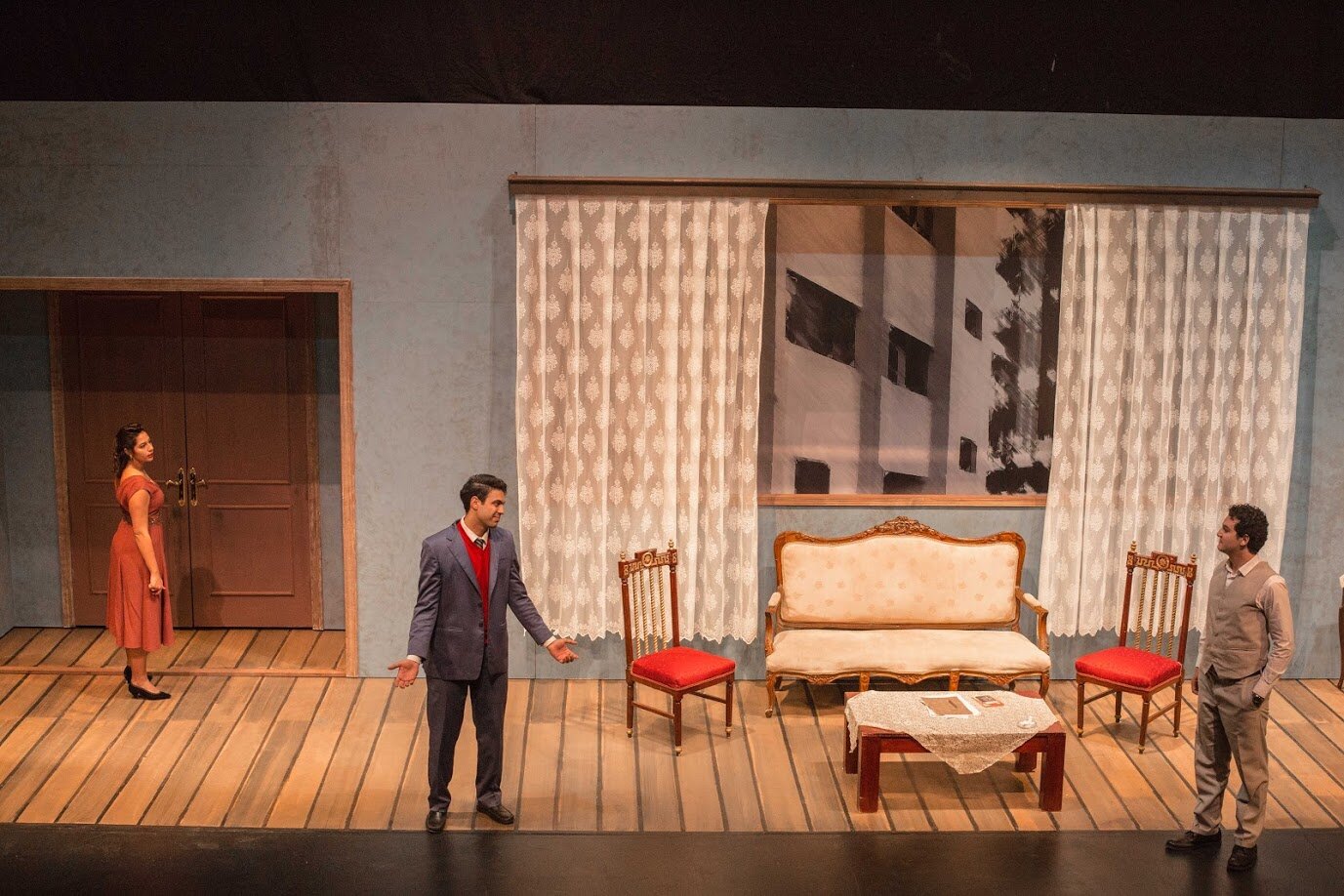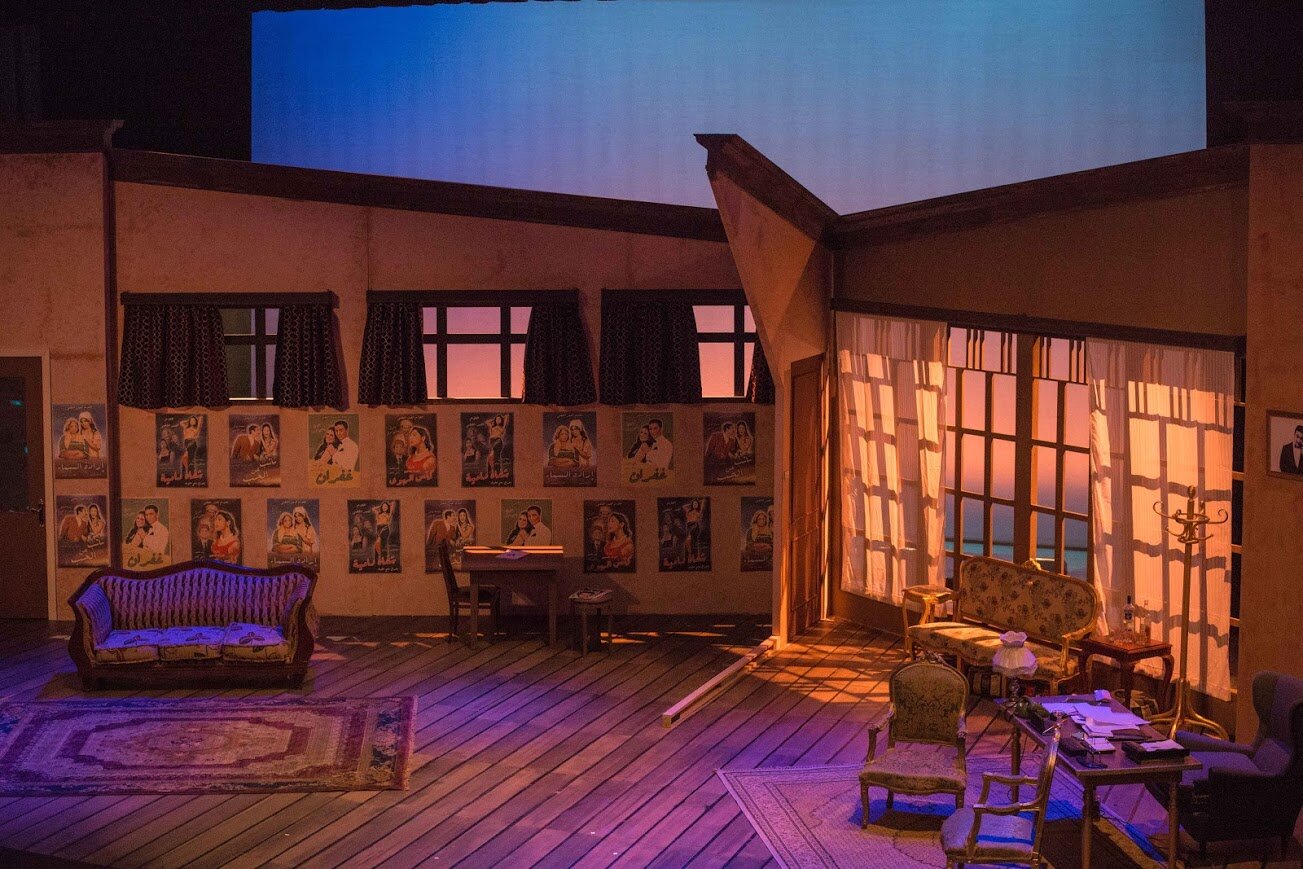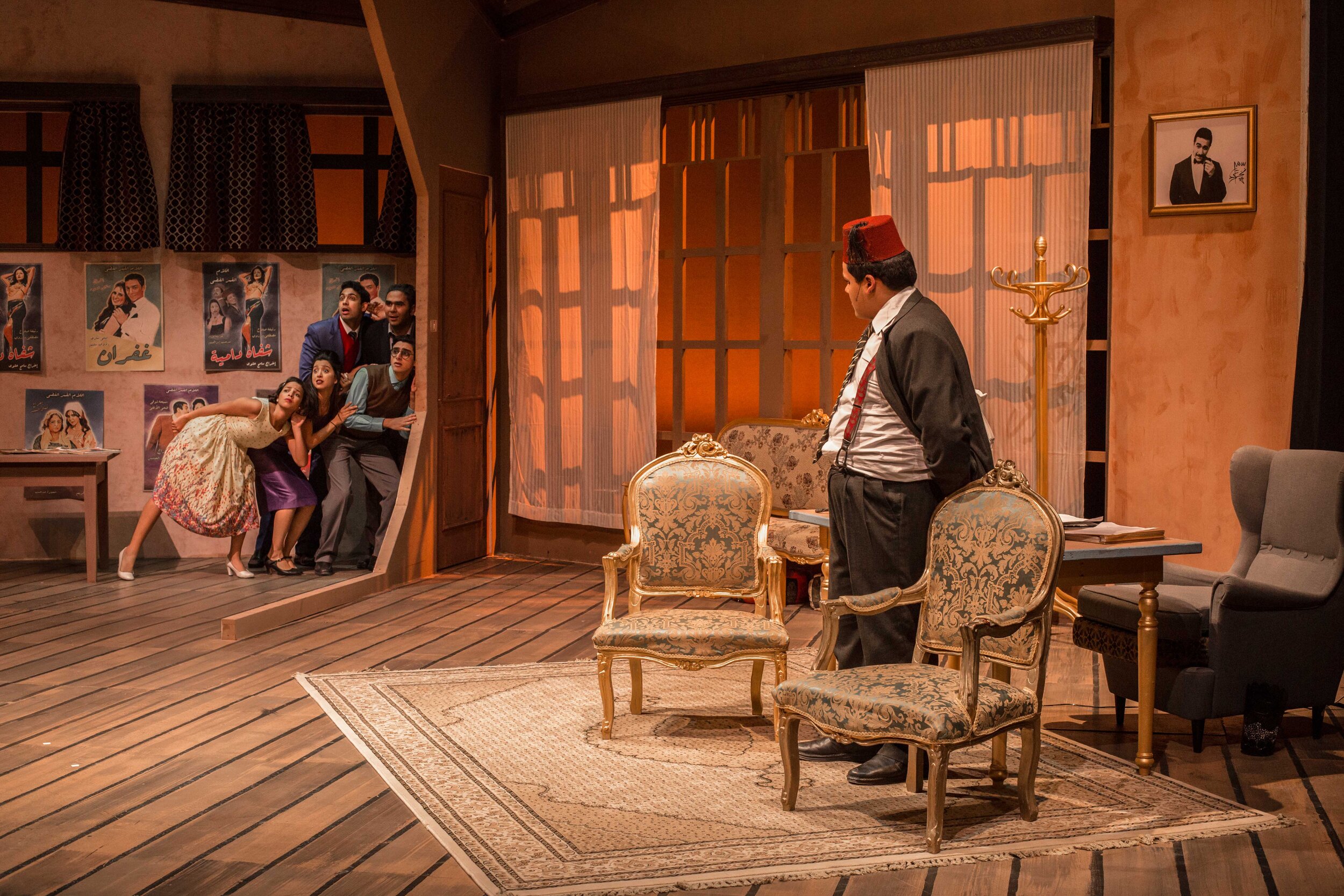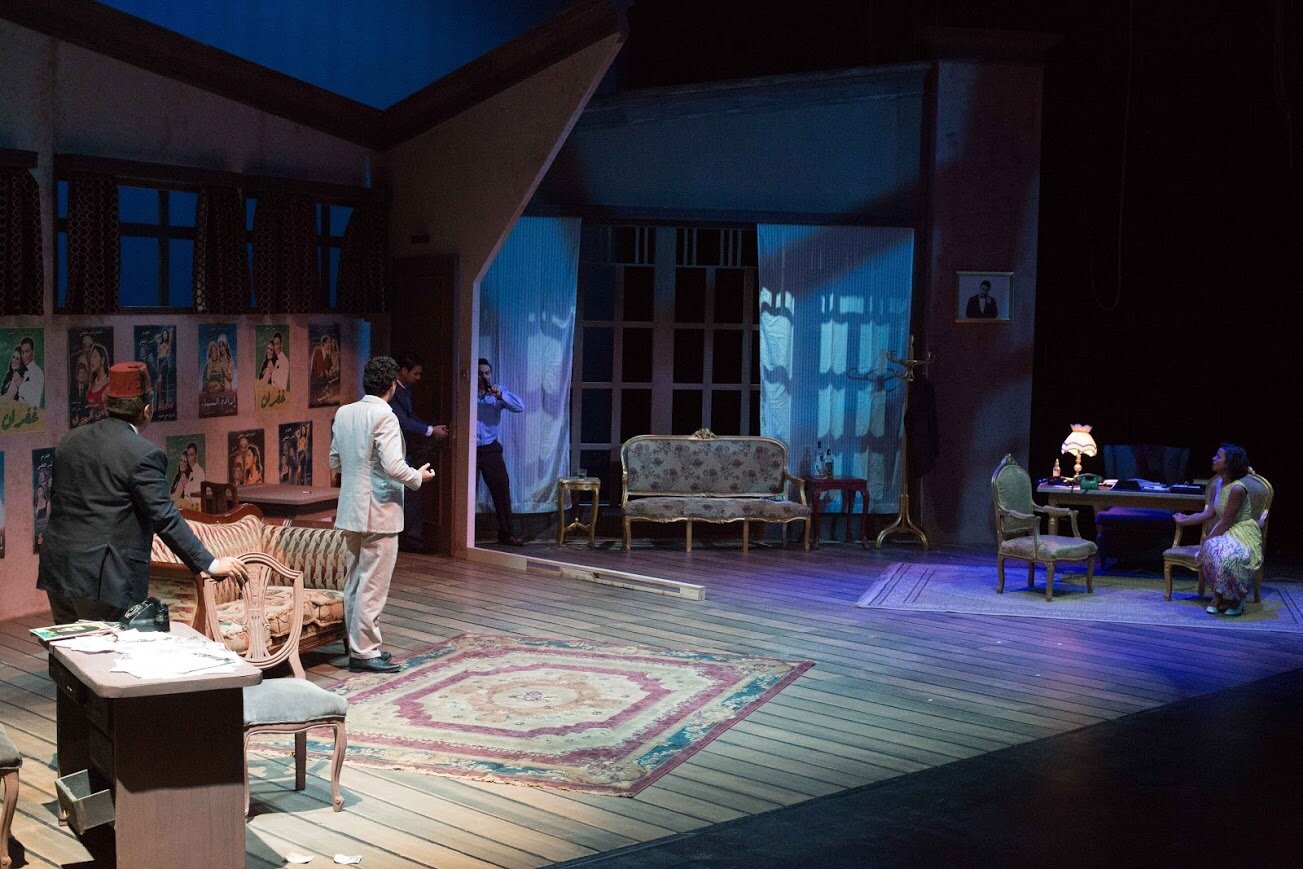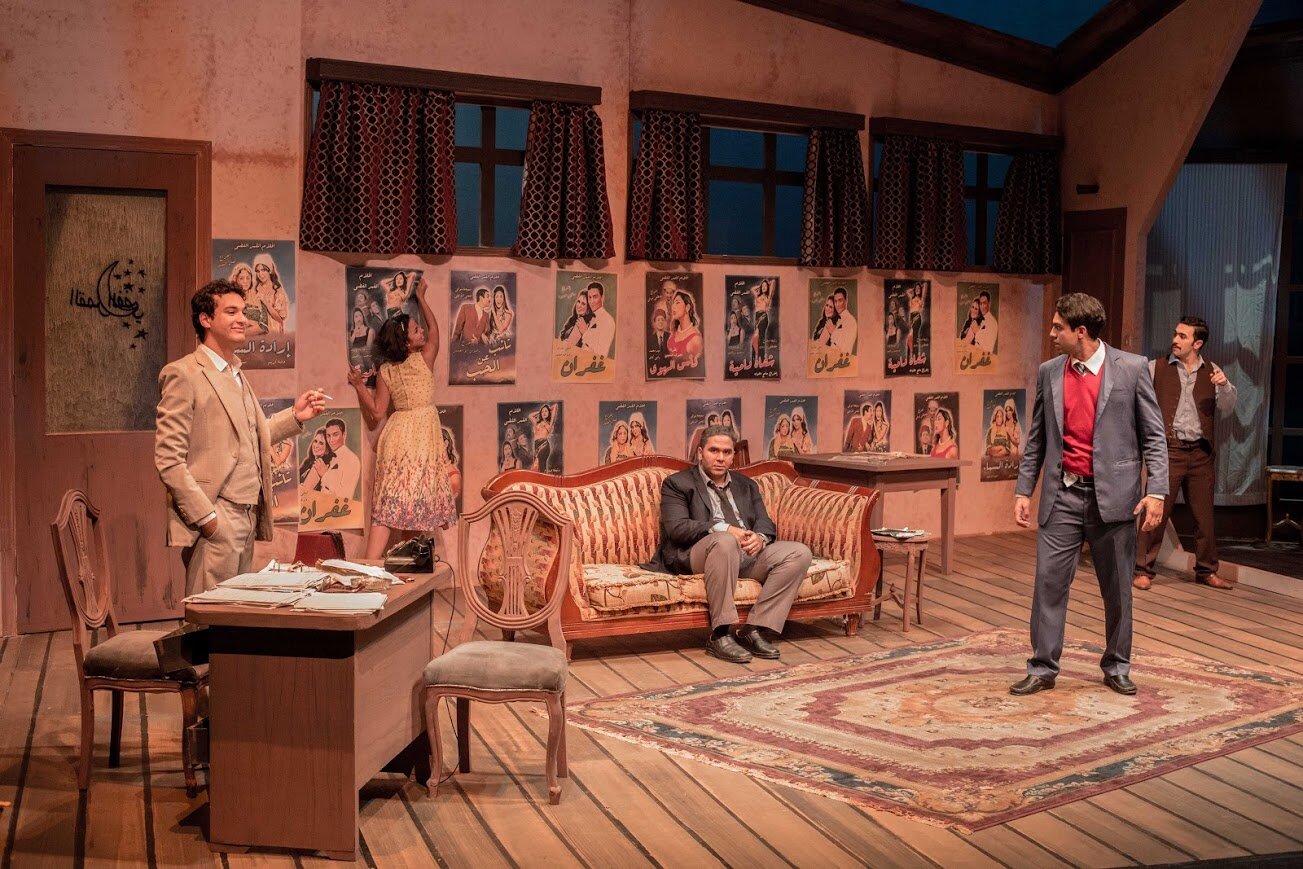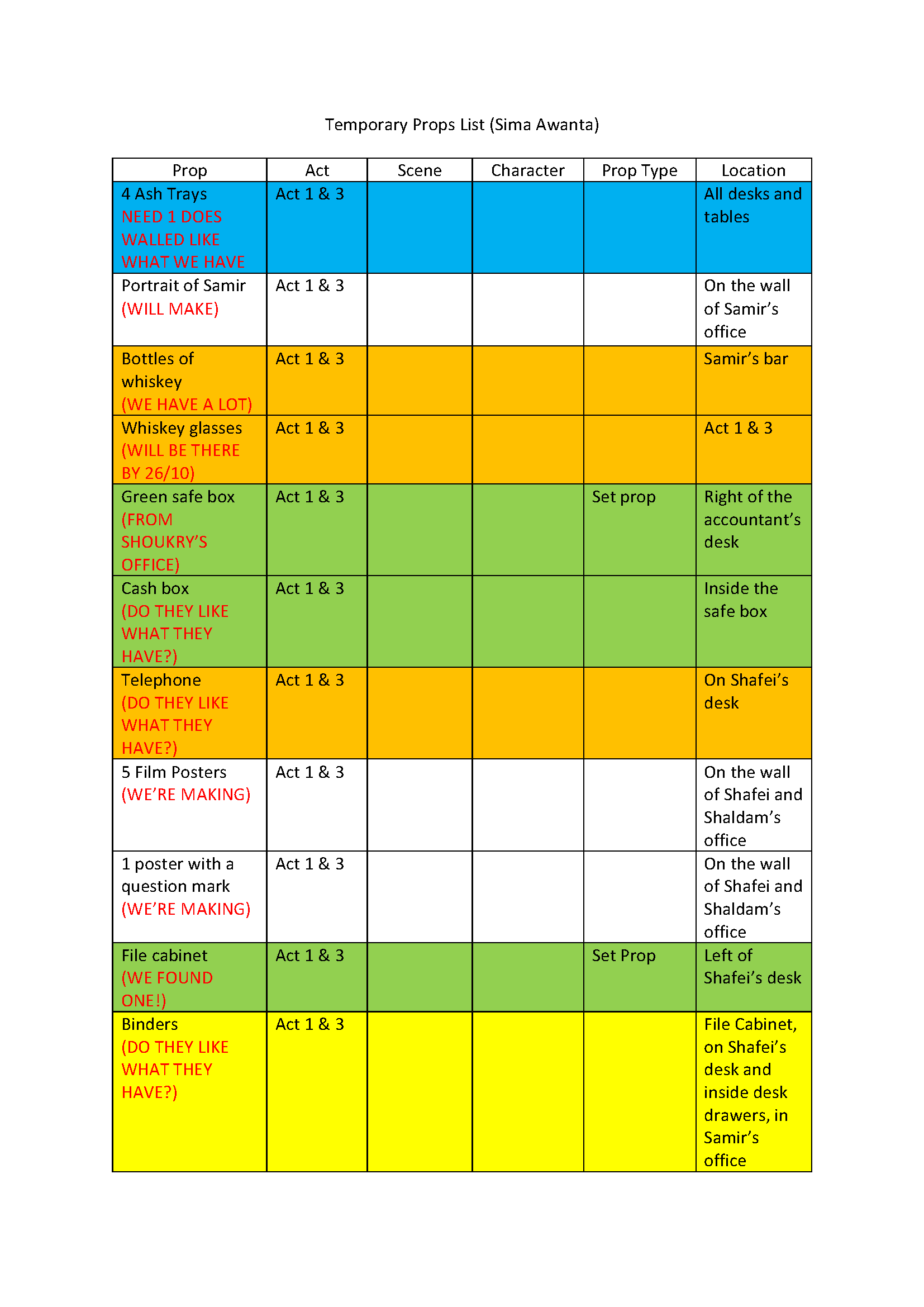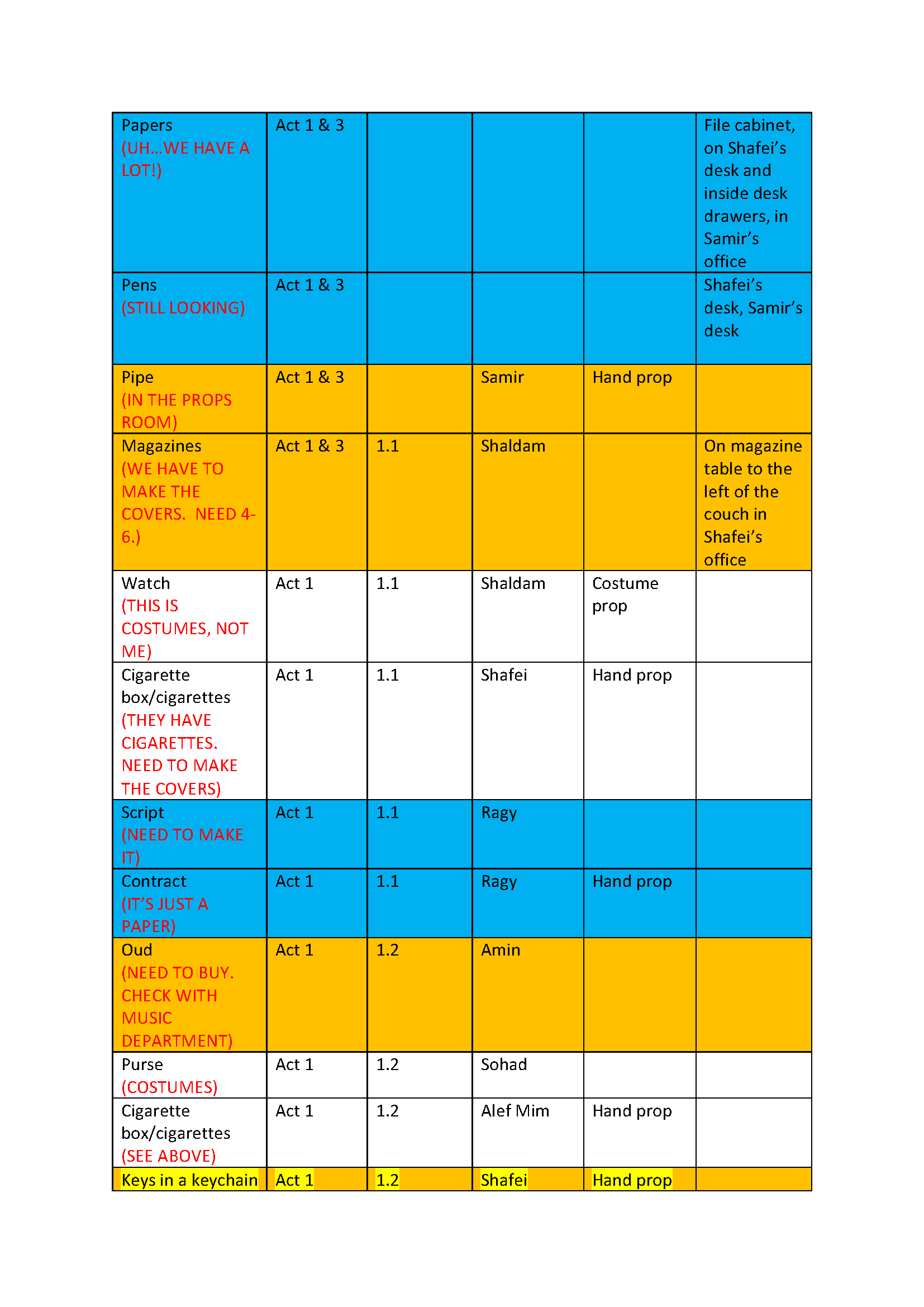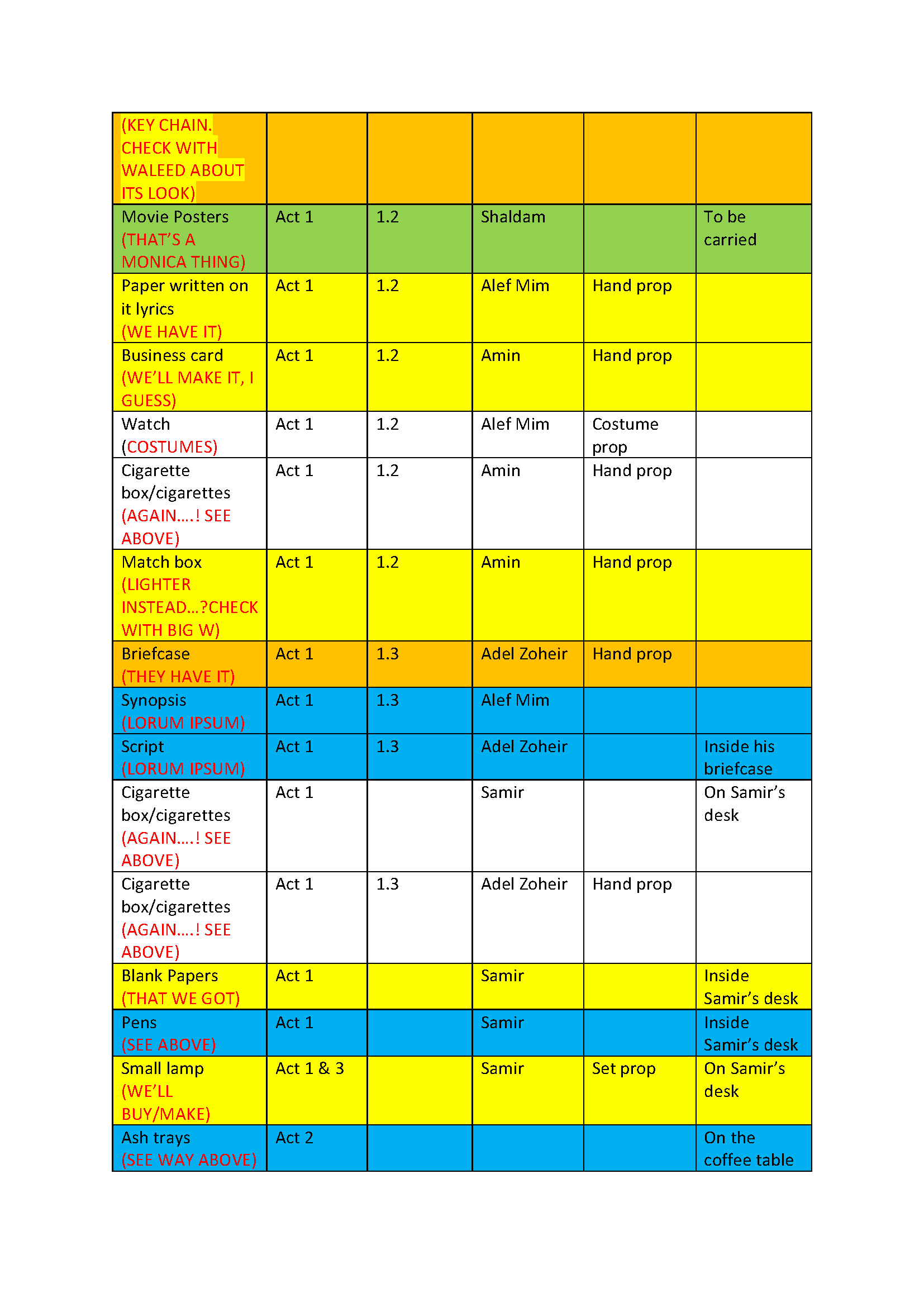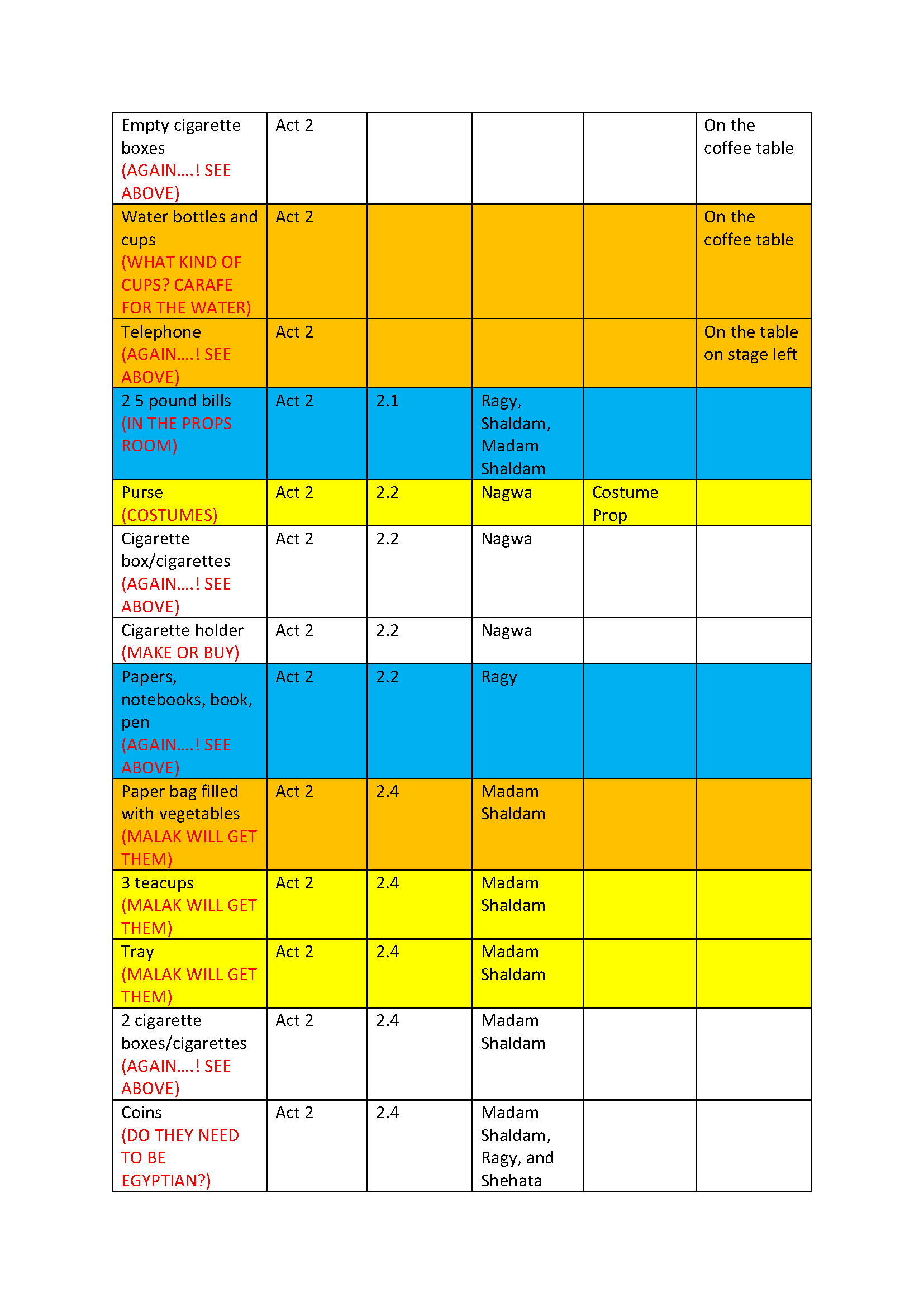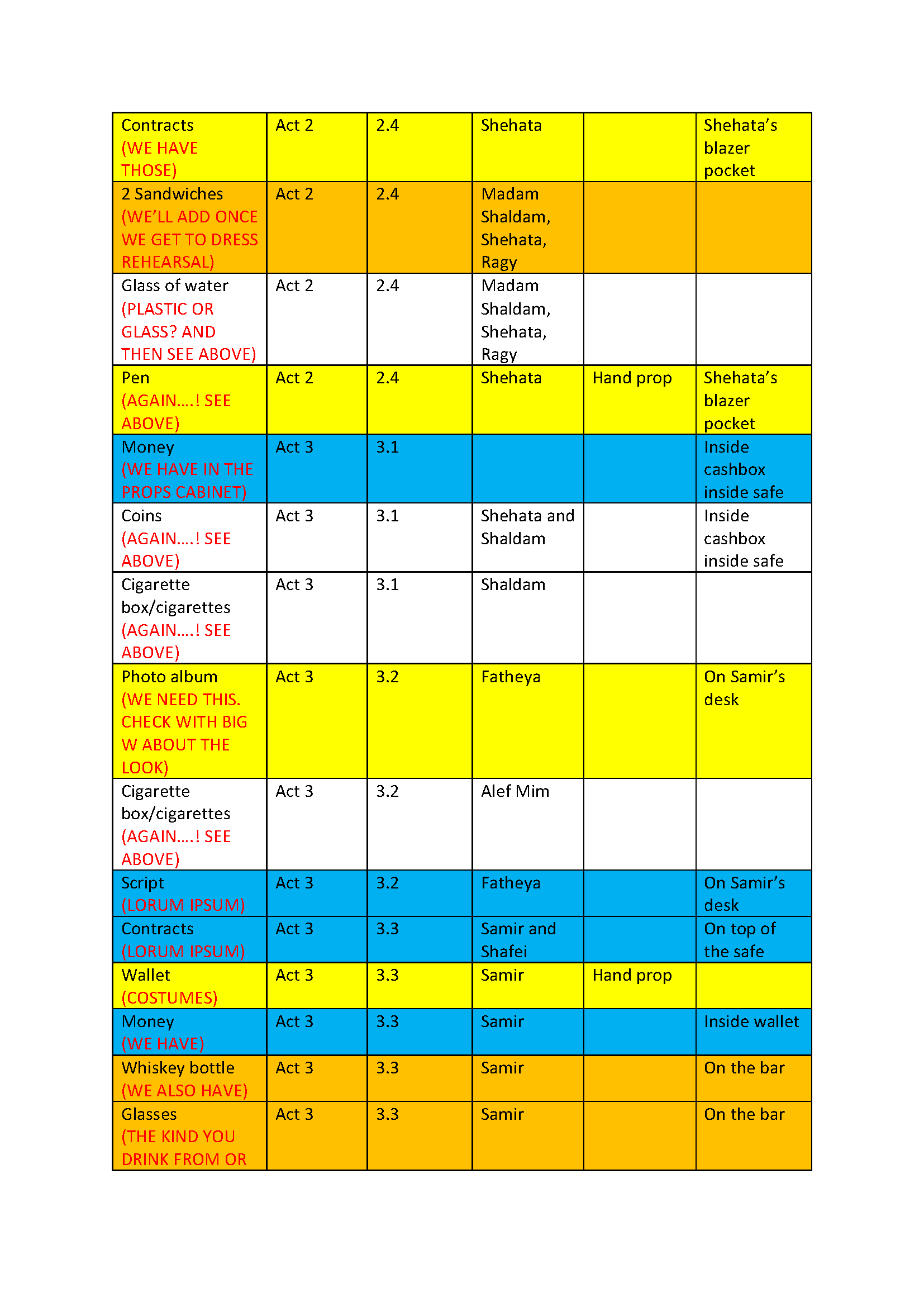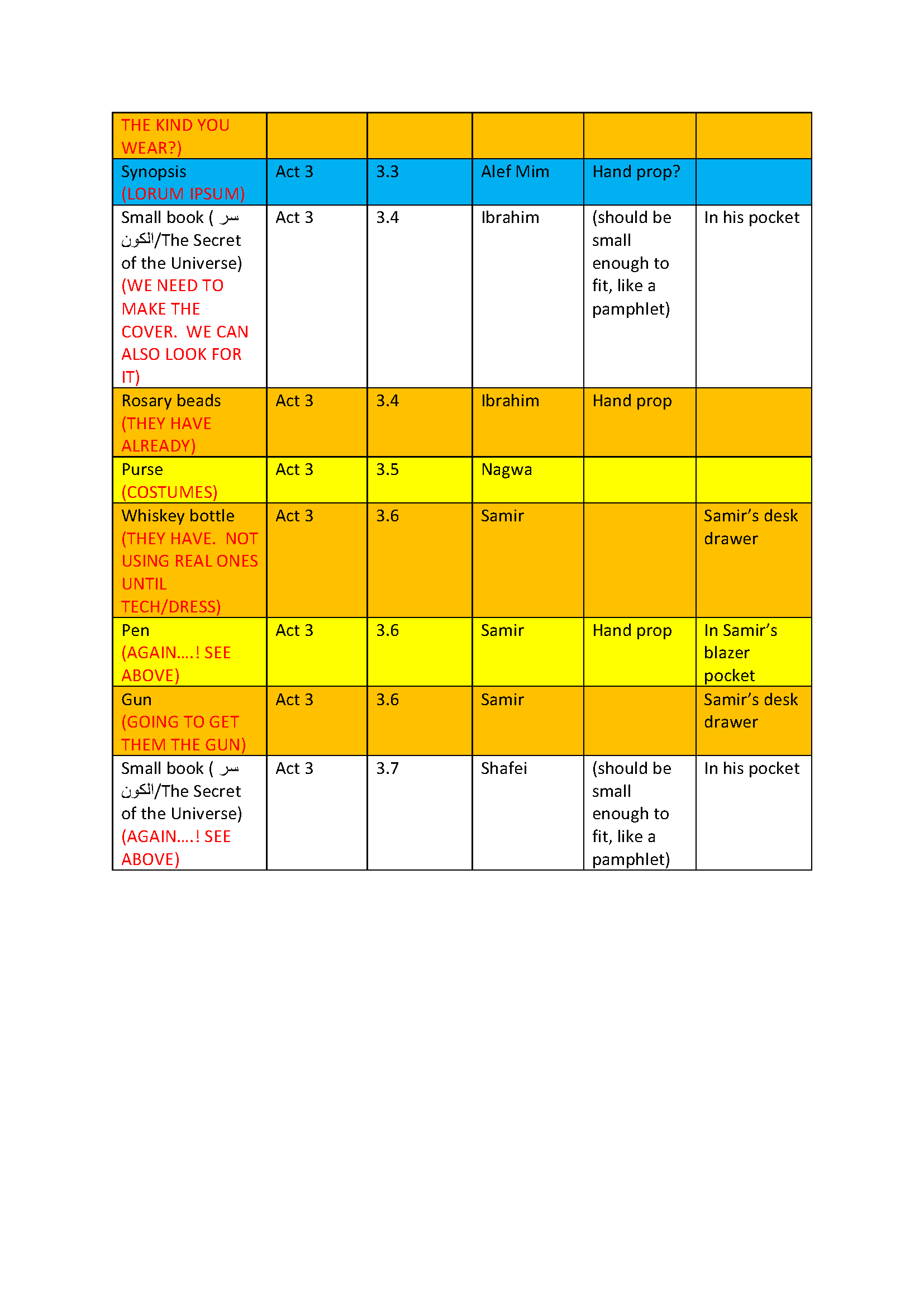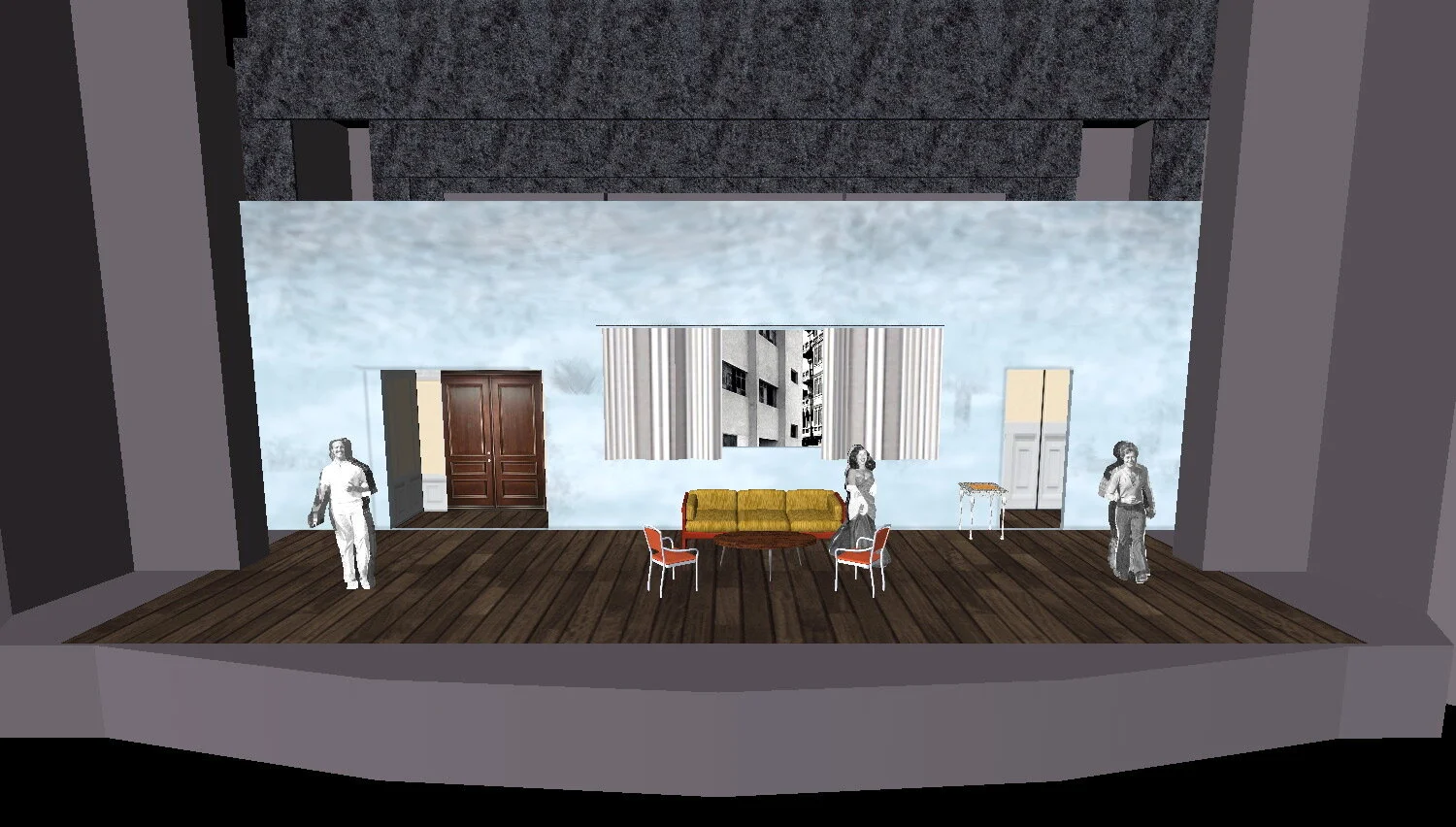Project 2- Sima Awanta
As the first play, Isaac’s Eye, was in process I began working with an AUC alumni, Waleed Hammad, who directed Sima Awanta by No’man Ashur. Written in the late 1950’s it’s the story of the seedy underbelly of the film industry in Egypt at that time. While Isaac’s Eye was a design of simplicity, Sima Awanta was slightly different and also set in a larger 300 seat proscenium theater (Malak Gabr Theatre). As an example, below are the props lists for both productions and the difference is evident.
I was delighted thinking that all productions at AUC would be like this.
Above is the Sima Awanta props list. Slightly different than my first production…
This gives an indication of the level of realism and specificity the director wanted. After an initial meeting, I put together a research presentation (https://www.youtube.com/watch?v=MeOjfHHbZNA). I was unfamiliar with the nuances of 1950’s Egyptian architecture and the problems with the film industry, especially since the American film industry has always been above reproach. This research provided more insight and allowed the director and I to select what elements were best. From there I created a 3D version of the set for us to start to look at. Acts 1 and 3 are in the same location; a film studio with a large outer office stage right taking up 60% of the space, and a smaller producer’s office stage left separated by a door and cut away wall. I presented some renderings of the space (below) and a walk through to check sightlines (Act 1/3- https://www.youtube.com/watch?v=YSdc1COfIQ4, Act 2- https://www.youtube.com/watch?v=04T8Z1Z2EBc).
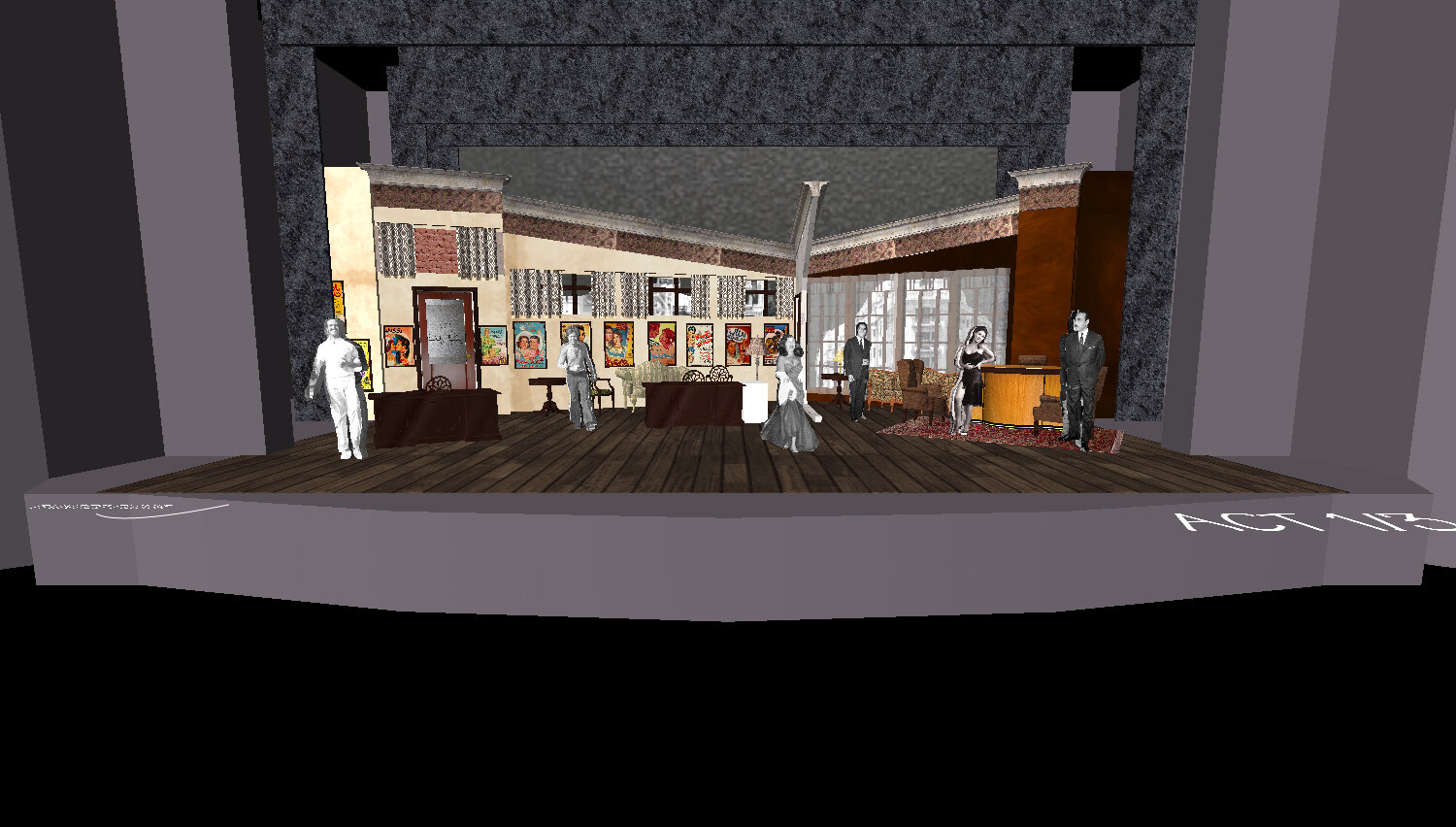

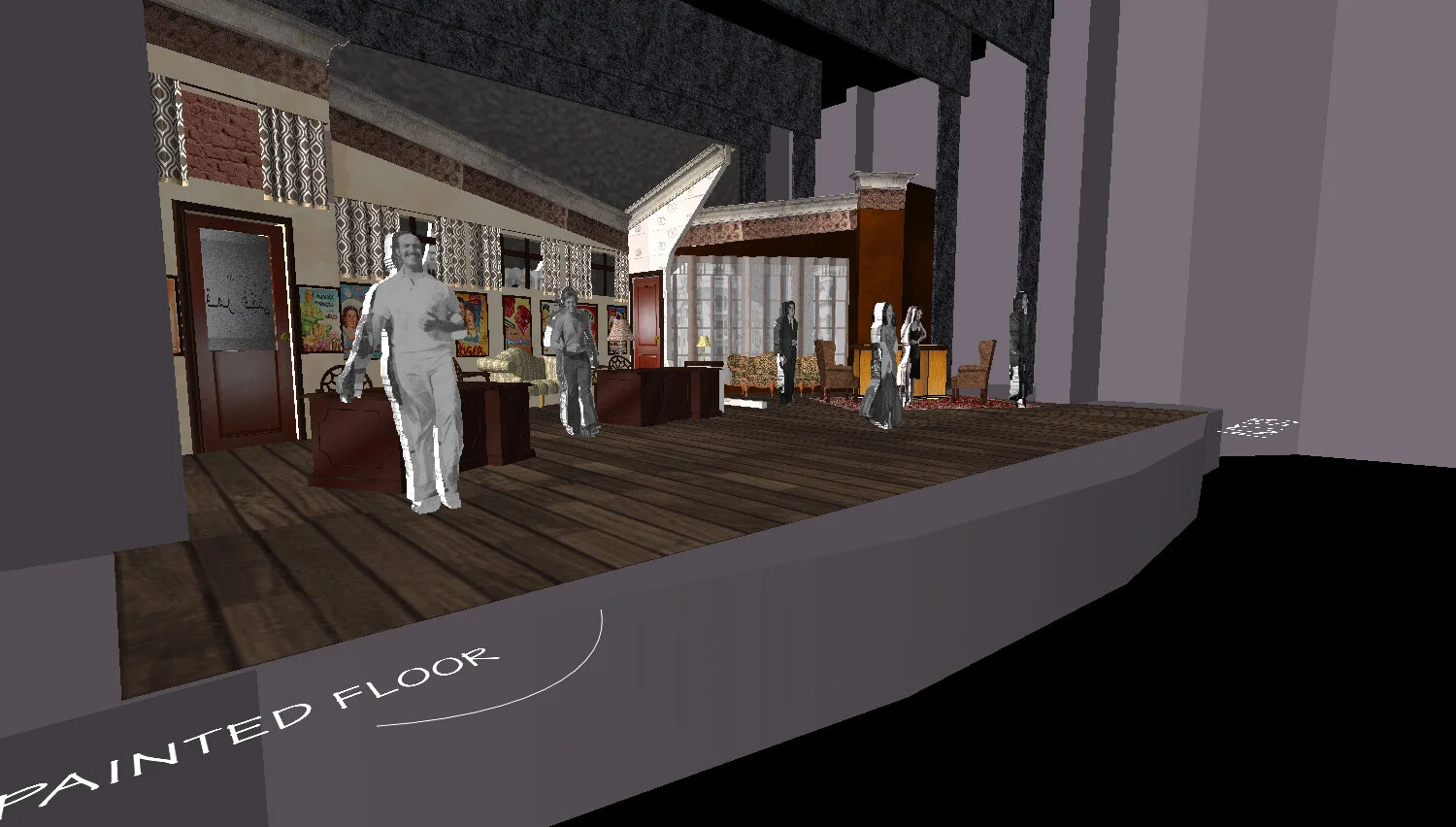
Because the play would be nearly three hours long, we decided to cut the intermission between acts one and two and do a live scene change in less than one minute. Act two is an interior of one of the office worker’s simple apartment. We decided that we could use just the down stage area of the stage and have a huge wall fly in on one line set, accompanied by a printed vinyl screen (seen through the window) and the entry door area pieces (quickly flipped into place by the running crew) flown in on a second line set 1.5 meters upstage of the wall.
Sima Awanta- Act 2
In theory and on paper this all made sense. Reality, as we often find, is often more complicated. Ultimately, because of the input from the staff, stage managers and running crew a system was devised that allowed us to clear the stage of Act 1 pieces that were in the way, fly in both sets of scenery pieces, assemble the door areas and place the Act 2 furniture and props by the completion of the first verse of Edith Piaf’s No, Je Ne Regrette Rien.
Below are examples of the draftings, details and paint elevations.
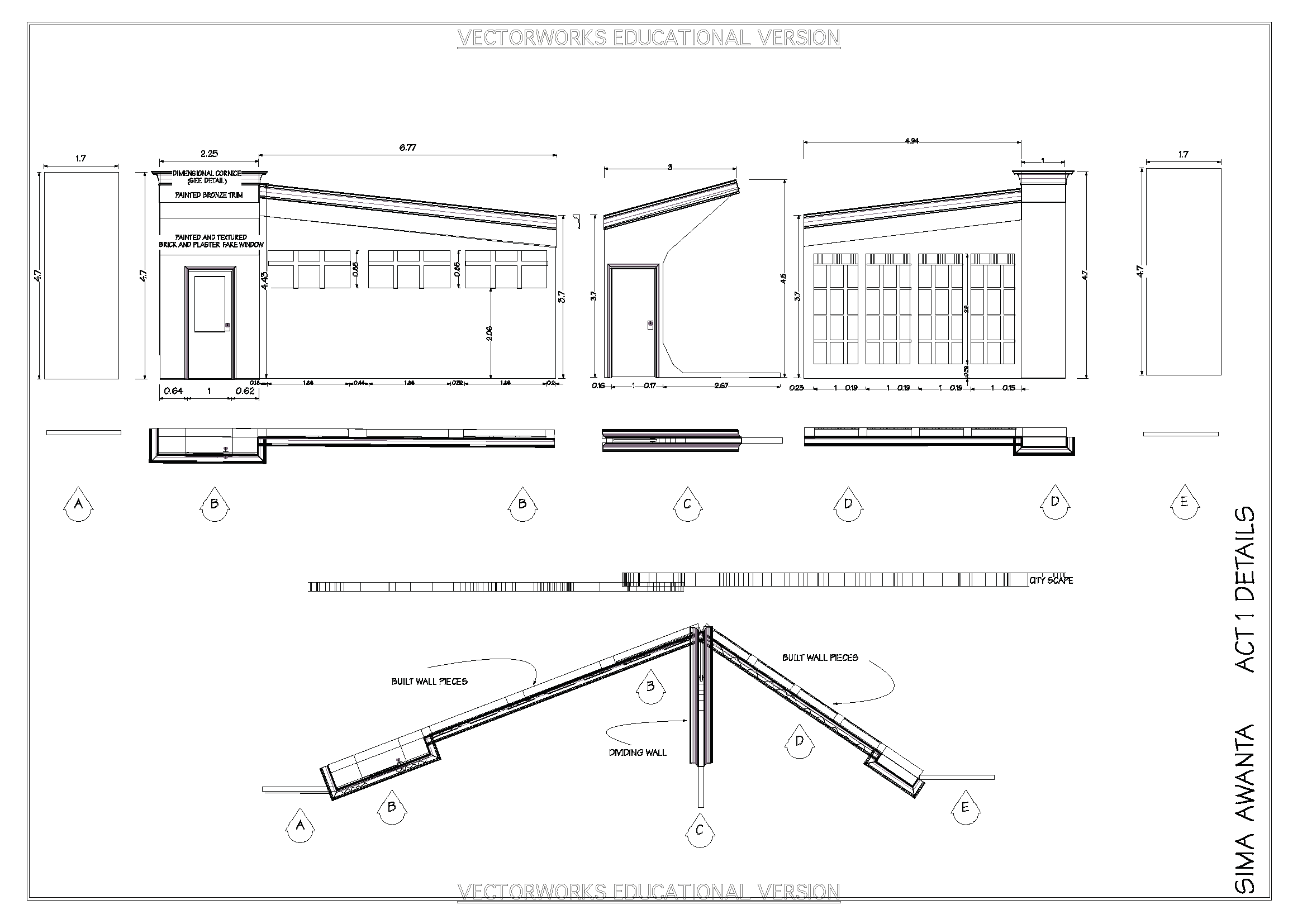
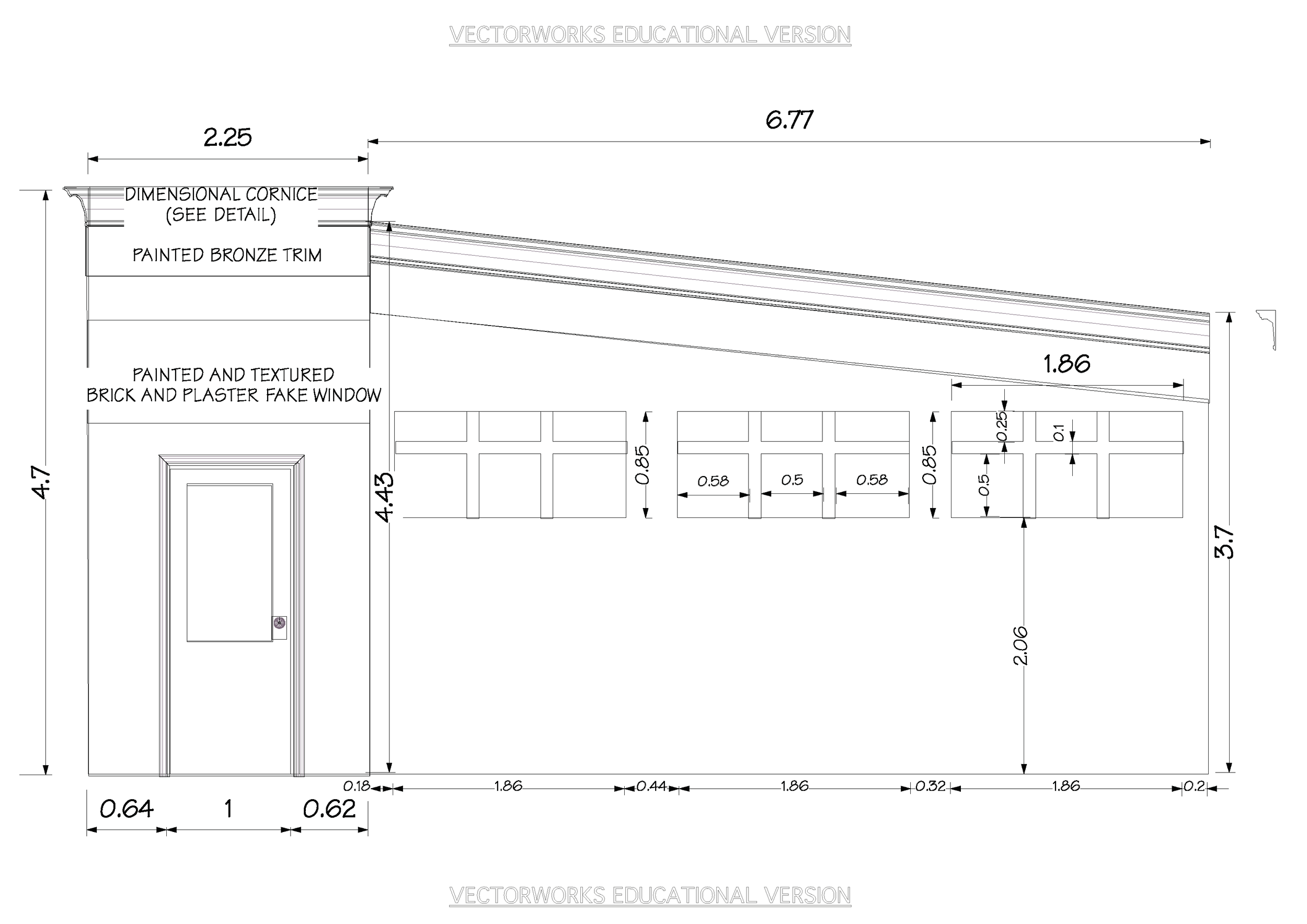


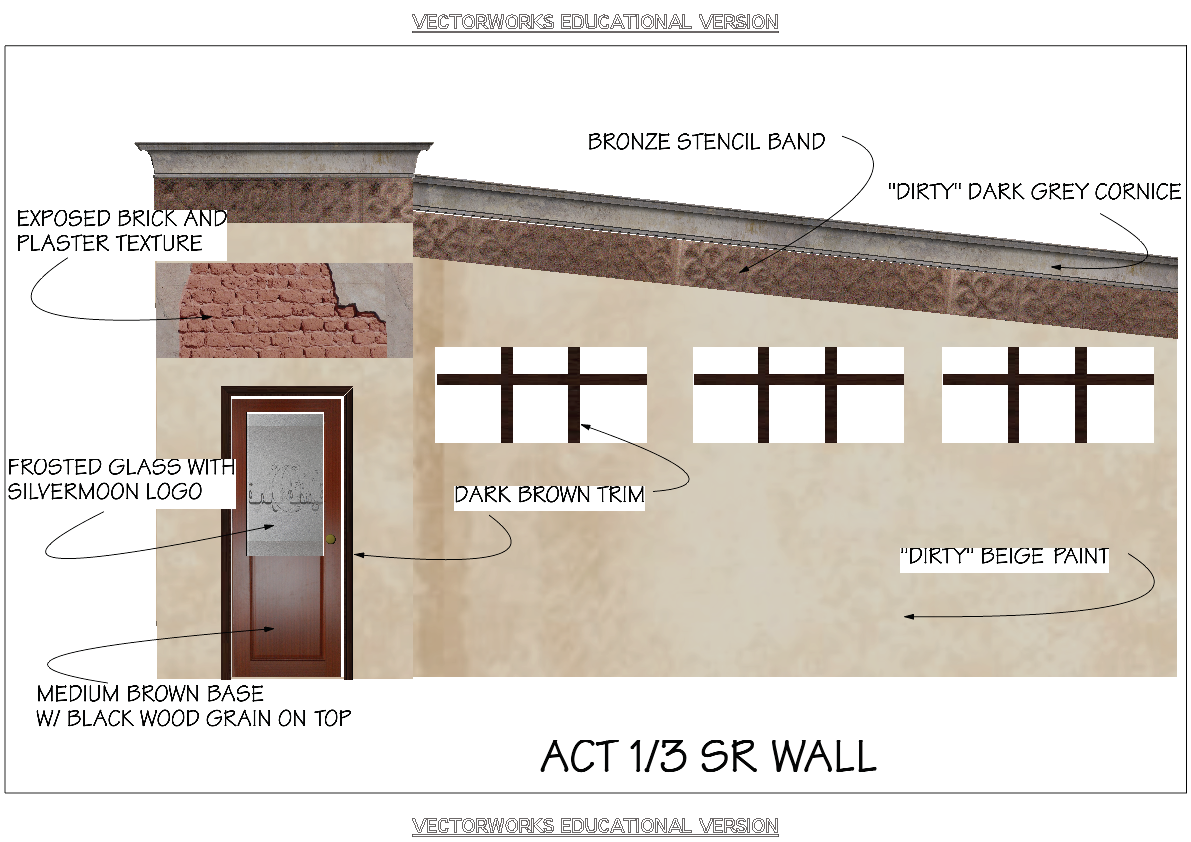
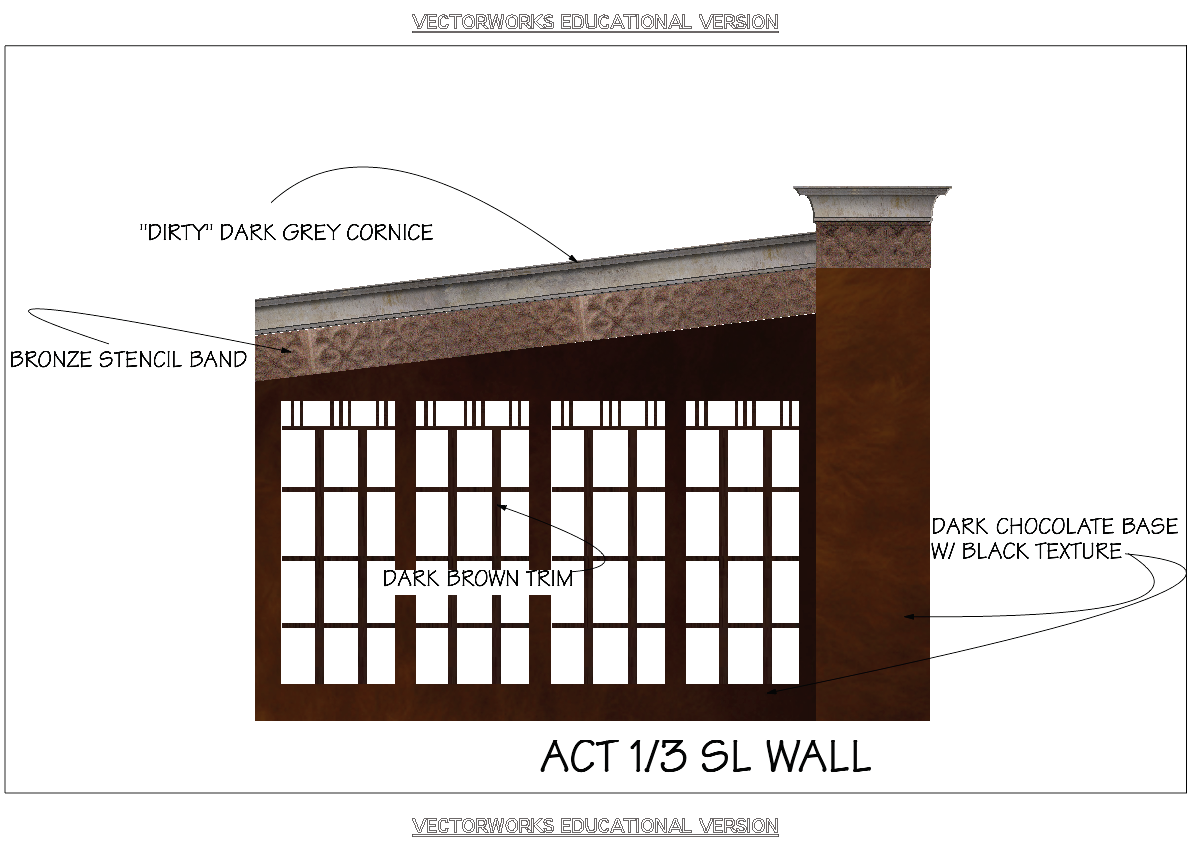
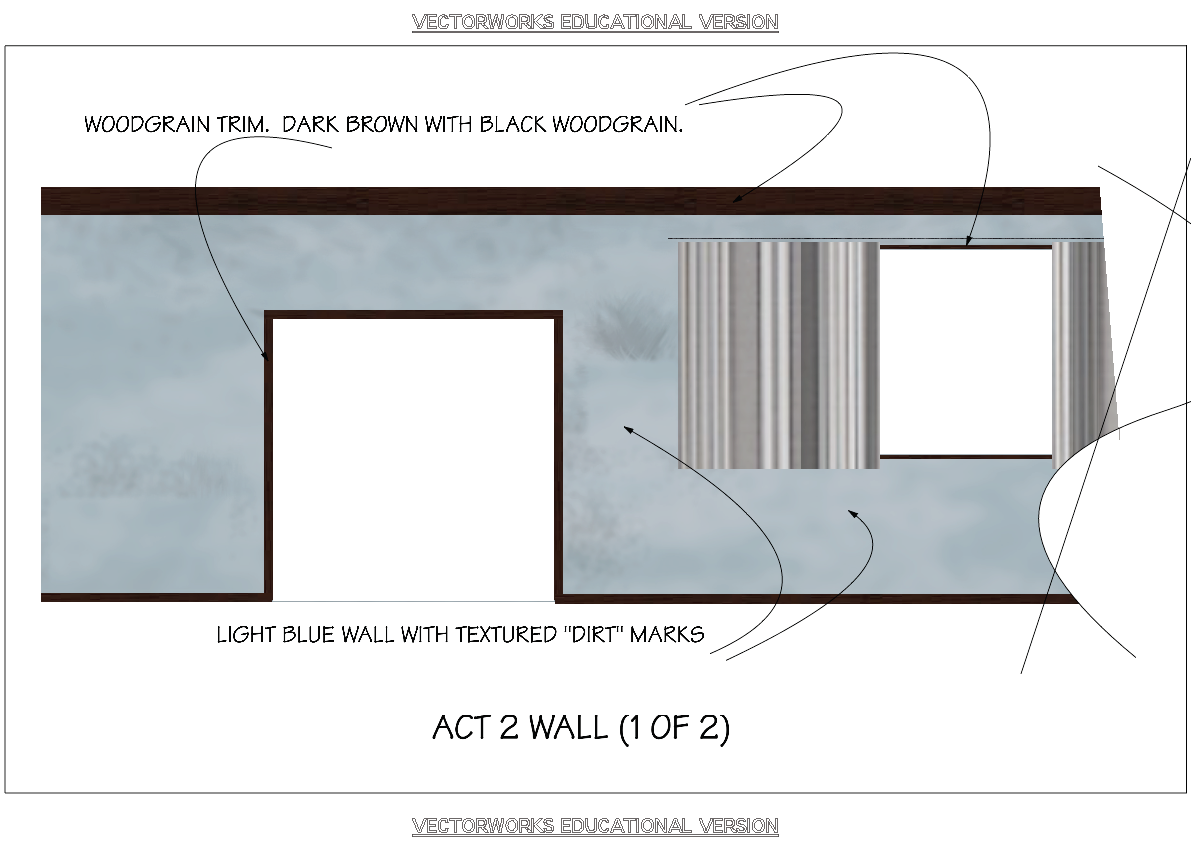
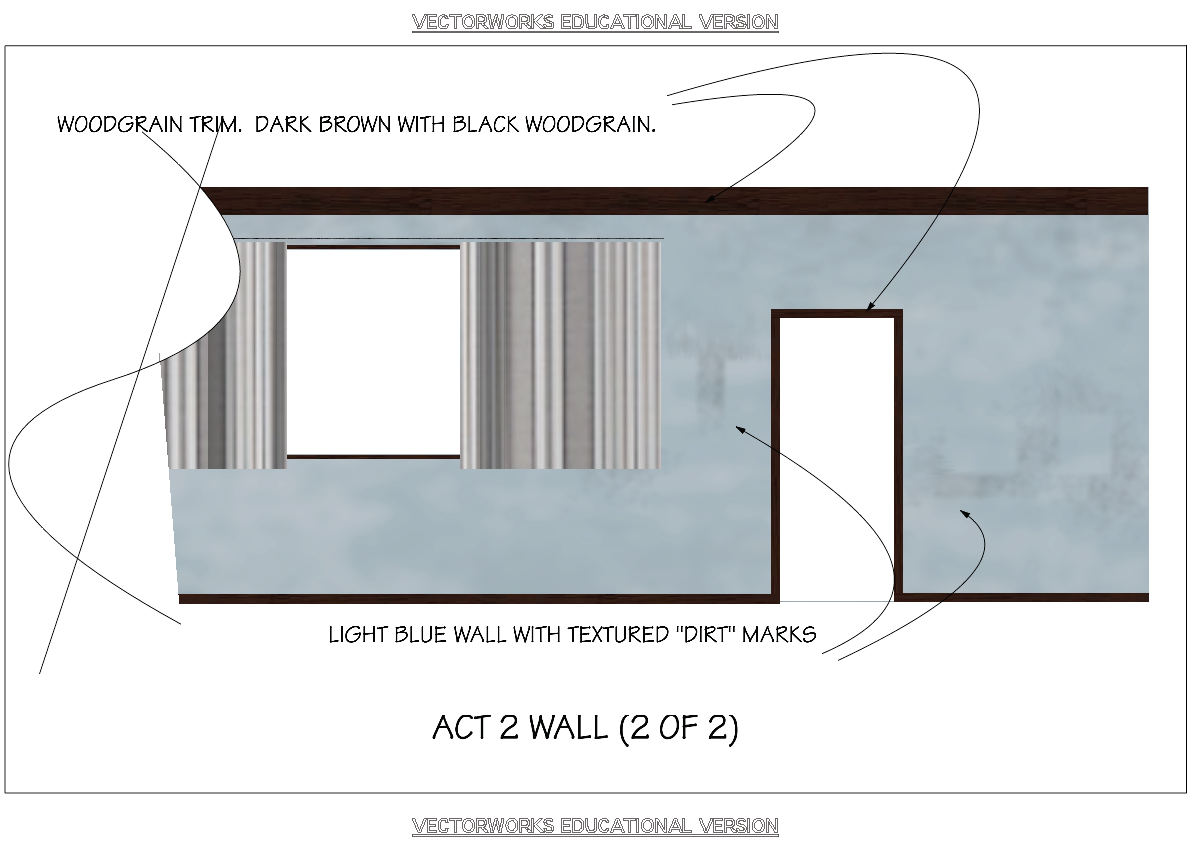
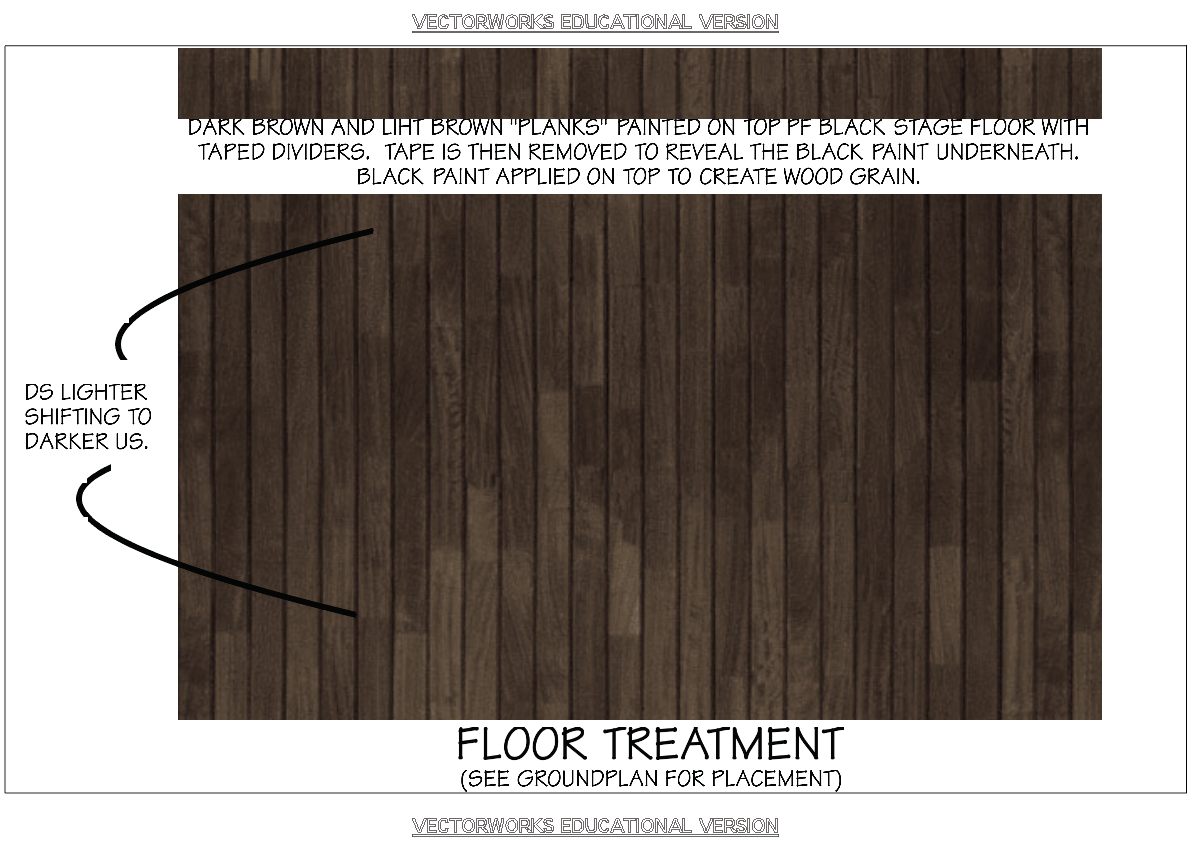
As the large scale set was being assembled and painted, I presented preliminary lighting ideas to the director (https://www.youtube.com/watch?v=01ObIzk7hNg). This play stayed within a realistic language and the primary idea of the first act was to shift the focus between the two areas of the office. The director and I developed a language and rhythm of smaller slower shifts between the stage right office and the stage left office, and more drastic shifts when needed. This second more obvious shift language was used primarily in Act 3 when the emotional levels reached a peak. All of this was decided during meetings when we could use Vectorworks to look at the potential cues. With confirmation the lighting design was heading in the right direction, the light plot was finalized and submitted for the staff to install. The light plot (below) was actually comparable to the Isaac’s Eye plot, as I had a much better idea of the logistics of the theater.
Sima Awanta- Light plot
As we started the technical rehearsals, the early communication and our ability to previsualize the lighting cues worked in our benefit and we were nearly able to set the cues in a single eight hour rehearsal. If it weren’t for sound issues and problems involving actors’ blocking, we would have had a relatively easy day because of our prep work. Through the rest of the technical and dress rehearsal process, the scenic and lighting design fell into place easily which allowed us to concentrate on sound and actor issues.
The performances went well and was one of the biggest selling productions in the Malak Gabr Theatre.

